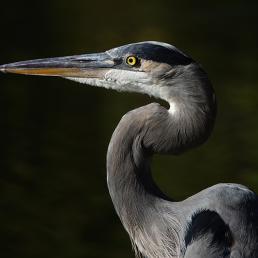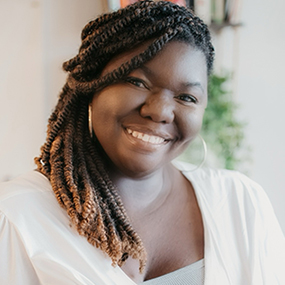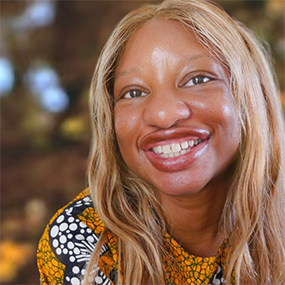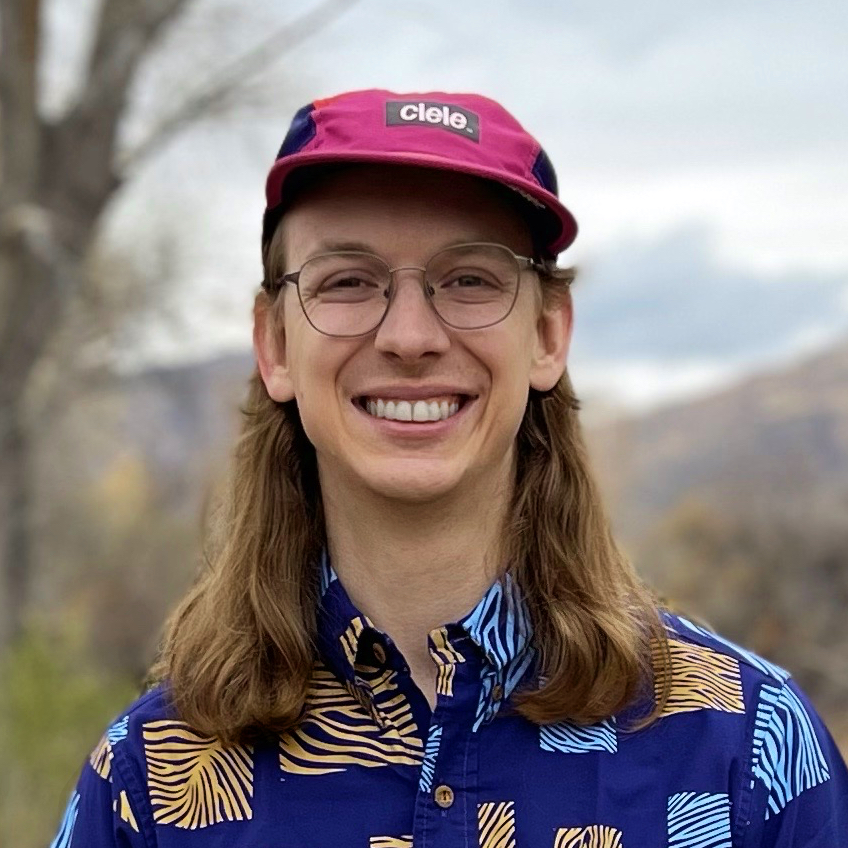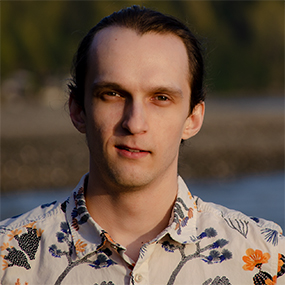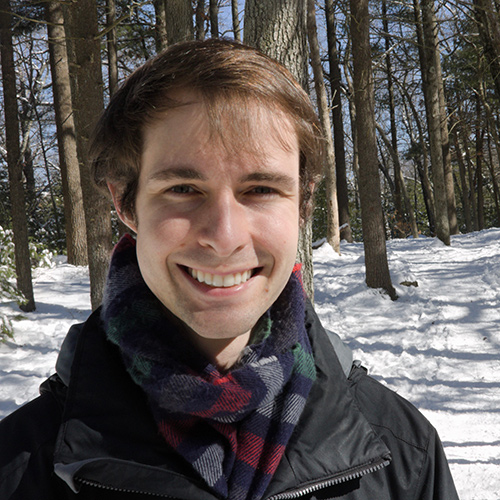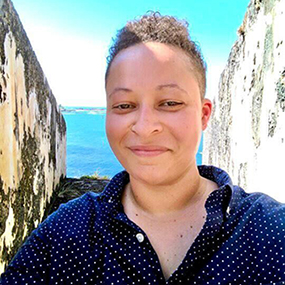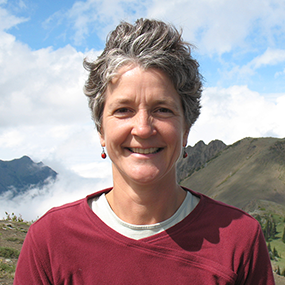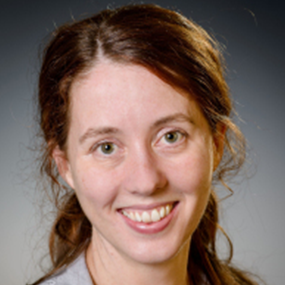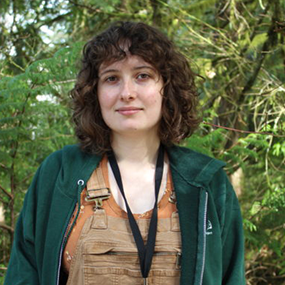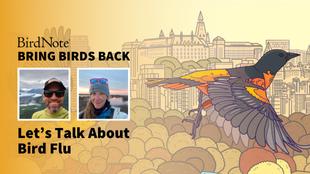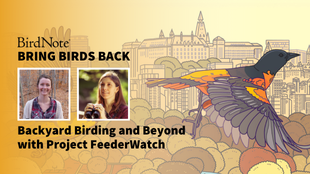

Join BirdNote tomorrow, November 30th!
Illustrator David Sibley and actor H. Jon Benjamin will face off in the bird illustration battle of the century during BirdNote's Year-end Celebration and Auction!
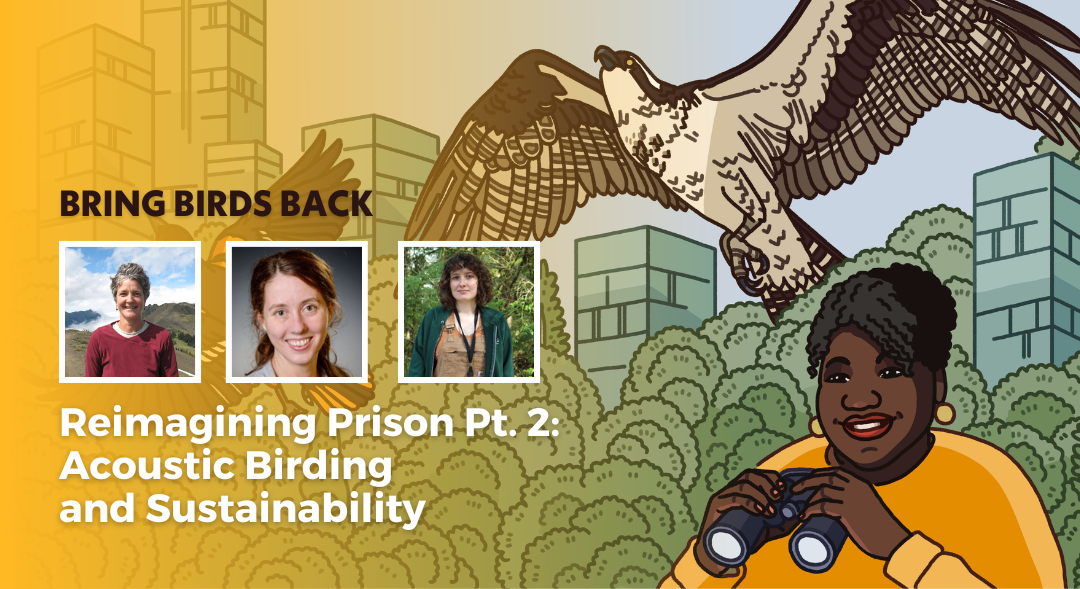
This is part two of our series on the Sustainability in Prisons Project. We encourage you to listen to Part 1 before listening to this episode.
Tenijah learns all about Sustainability in Prisons Project’s most successful program to date: rehabilitating the federally endangered Taylor’s Checkerspot Butterfly. Find out how the incarcerated participants at Mission Creek Corrections Center are saving the endangered species and changing the ecology of The Evergreen State year by year. Then, we’ll take a step further out and explore how green projects impact lives inside prison and upon release. Is it possible to move toward a more humane prison system by saving the planet? Listen in.
More info and transcript at BirdNote.org
Want more Bring Birds Back? Follow us on Instagram! For more BirdNote, subscribe to our weekly newsletter. For ad-free listening and other perks, sign up for BirdNote+ here.
BirdNote is a nonprofit. Your tax-deductible gift makes these shows possible.
Bring Birds Back Season 4 is sponsored by the Cornell Lab of Ornithology.
This is part two of our look at the Sustainability in Prisons Project — if you haven’t listened to part one, we recommend you check that out first.
[BirdNote Presents sonic logo]
Tenijah Hamilton:From BirdNote, this is Bring Birds Back. I’m Tenijah Hamilton.
What makes a species worth saving?
For any given bird, there are countless reasons why saving them is worthwhile: from plants they pollinate, waste they scavenge, seeds they disperse, pest insects they devour and entire ecosystems they uphold — they’re vital to the health of our Earth. And even to our health — their songs, their beauty, and their distinct personalities are a joy to witness on the worst of days.
But how much does any of that matter, if most people don’t know these reasons? How many birds would be saved if everyone in the world knew that so many are facing a threat of extinction?
So, I guess what makes a species worth saving is the knowledge that they need saving — and what would be lost without them.
[Varied Thrush call]
I've come to think of the Sustainability in Prisons Project through this same lens.
During our visit to Washington state prisons, there was a throughline in all of the stories we heard from the incarcerated technicians– that the education programs they participated in gave them a sense of agency and power.
They weren’t just helping to heal turtle shells or rear butterflies — the technicians were gaining confidence that came from simply knowing about the animals, their environments and their plight.
Along with the knowledge that there’s a huge world of problems that they could potentially help to solve — they gained newfound confidence in their ability to solve their own issues, as well.
It reminds me of that James Baldwin quote, “Not everything that is faced can be changed, but nothing can be changed until it is faced.”
The uniqueness about the Sustainability in Prisons Project is its goal to provide this education that betters everyone involved. Not only the folks doing the work, but the community as well.
Today, we dig a little deeper into this idea of education as power. And we’ll talk about rehabilitation in prison. Is it actually possible in that space?
But first — let’s frolic with the butterflies! The Taylor’s checkerspot butterfly program by SPP is its most successful program to date. We’re gonna dive right in!
[Wind howling across the prairie in Washington state]
Mary Linders: With any individual species, we can always ask, well, why do we need that one, right? Well, if we don't fight for what makes this world unique, what keeps this world bound together, what is it we're here for? What are we here to do? Are we just here to consume stuff? I think there's a lot more out there. You know, and, and we need those animals. We need insects to pollinate our flowers, to pollinate, you know, our food. We need all those things to work together.
[end music]
Mary Linders: I'm Mary Linders with the Washington Department of Fish and Wildlife. I have been doing endangered species recovery work for really most of my career, so well over 20 years. And I have been working on recovery of a number of species in our South Sound prairies here.
And for people that might not be familiar with western Washington, western Washington is known for its very large conifer trees, very tall, dark spaces otherwise. And there's these remnant prairies that occur where the glaciers left very gravelly soils too dry for conifer trees and other trees to grow.
And so we have these grasslands there, instead, and they're just very small relics of what was once there 10,000 years ago. They host a number of wildlife species that would normally be found east of the Cascade Mountains, where there's a lot of grassland in the Great Basin and Columbia Basin areas.
So I got this job because those animals needed my help. And I've been in this position about 19 years. And Taylor's checkerspot butterfly was one of the first things I started working on. And working on the captive rearing piece was actually one of the very first parts of that task as well.
Tenijah Hamilton: I love that you say, ‘they needed my help.’ I feel like that connects to like, I don't know, at least for me, I think about being a kid and you just — I wanna help this thing, I wanna be nurturing.
It's really awesome to see how you can turn that into, not only an adult career, but something that really impacts ecology and science and conservation work. That's really awesome.
Mary Linders: Conservation is about trying to learn to read what the animals need out in the wild so that we can put their habitat together, so that we can help them survive the conditions that they're facing.
And you know, that's what the gals at Mission Creek have done such a good job of, is really focusing their attention on those animals to be able to respond to their need.
Tenijah Hamilton:First of all: it’s important to know just how adorable Taylor's checkerspot butterflies are. Ray Dunning, a grad student at The Evergreen State College and the butterfly program coordinator for SPP, shares this:
Ray Dunning: So, they are cute. They're really small. And they have these brick-like checkerspot patterns on their wings. So on the outside of their wing, they're white and orange. And then on the inside they have this black and orange checker pattern. And they fly really interestingly. They're kind of like — they don't really know where they want to go or what they're doing.
Tenijah Hamilton:So, how did these cuties wind up an endangered species? Well, it has to do with that grassland prairie habitat.
Ray Dunning: The butterflies depend on a fire ecosystem. Euro-Americans came in and basically disrupted Indigenous burning. There was a lot of fire suppression, right? And so that disruption in burning kind of set them back, but there's more. So with that came urban development, and so when these prairie systems began to be developed into mostly agricultural land, that created a lot of habitat fragmentation, and basically made the issue worse.
And research papers state that it used to flourish in the thousands. And so it was present out on the prairies, in British Columbia and Joint Base Lewis-McChord area, um, South Puget Sound, down in Oregon's Willamette Valley. And plus, the introduction of exotic grasses.
I came across a research paper that said they were found in about, I think it was 45 sites in Washington. And now they're down to 11. And so, in British Columbia, they're down to, I wanna say it was one site. And I'm not sure how many in Oregon. But yeah, drastically reduced.
So these captive rearing programs were essentially started to try and help them- give them a leg up, right?
Mary Linders: The captive rearing program, even the start of it was kind of interesting because we had someone that captured a female checkerspot to verify the identification of it. And she put that female on a host plant, on one of the plants they lay eggs on, so that we could take pictures of it, verify it was the right species, et cetera, while she laid eggs on that plant.
And that really, kind of, gave birth to the captive rearing program, which initially started down at the Oregon Zoo in Portland. And they helped us develop the methods.
Tenijah Hamilton:And as the program in the Oregon Zoo found success, it also grew to its capacity. Around the same time, someone from SPP connected with Mary, and it seemed like a perfect fit.
That’s not to say that it was easy to set up, though. There was pushback…about the logistics of the program and from scientists worried about entrusting this endangered species to incarcerated people.
Mary Linders: It was a little bit of a sticky concept to try to sell, especially at the front end when we were trying to get money to do all this. Because it takes a lot of money, especially when you're having to build structures and the whole bit. And trying to convince people that this was a good match was definitely a challenge. I think we did a pretty good job of demonstrating, at each step and stage, that we could pull this off. And I don't let much get in my way.
Tenijah Hamilton: We love that. We love to hear that.
Mary Linders: Some of it's that creativity, but just determination. You can't do this work without, you know, the kind of dedication and determination that I keep mentioning and that I think Mission Creek has done such a wonderful job of embracing.
Tenijah Hamilton:Mary and SPP started the program by helping technicians build their first greenhouse and having them practice with a non-endangered butterfly species for a trial run. They quickly proved not only to be very competent, but even more successful than anticipated.
Tenijah Hamilton: How many butterflies have been released through this program?
Mary Linders: Overall, and this would be both facilities, like over a hundred thousand?
Tenijah Hamilton: A hundred thousand butterflies?
Mary Linders: Yeah. We gotta be right around there.
Tenijah Hamilton: Holy mackerel.
Mary Linders: Not as butterflies, as caterpillars. There's more caterpillars than there are butterflies in the world.
Tenijah Hamilton: And the idea is like, we release the caterpillars and then they go and continue to grow and will eventually turn into these butterflies?
Mary Linders: Right. Exactly. Yeah. And we release the caterpillars 'cause they're easier to handle. They don't — they're not gonna just fly away when we put 'em out there. They'll crawl around and explore the place. So yeah, we have a bunch of reasons why we released the caterpillars instead of the butterflies. But, yeah.
Tenijah Hamilton: I was about to say the details of that make a lot of sense. I can see it descending into a little bit of chaos. You have these winged creatures who can do whatever they want.
Mary Linders: Right.
The animals wouldn't need our help if we weren't kind of messing with their system. And so that's what the gals are doing at Mission Creek, is they're nurturing those animals so that they have a chance to get back out there and do their thing. It obviously works both ways. It works for the women as well, as you probably saw.
[music starts]
Tenijah Hamilton:And, we did. While visiting the technicians incarcerated at Mission Creek, we learned quite a few things. Chief among them? How much they all value the time outside of the prison - in the greenhouses - and just how serious they are about being delicate and gentle as possible with the larvae. We spoke with four technicians who all vary in their length of time working on the project.
PS: In the greenhouses, you may also hear some background noises from air conditioners, UV lights, and the diligent technicians busy caring for the larvae.
Here’s Radeline King.
[music fades]
Radeline King: These caterpillars — these larvae are just coming out of diapause, which is kinda like hibernation, so they're just waking up and getting their food, and so I'm making labels for their new cups. They're being split up into new, smaller groups, and so I'm just creating the new labels for their new little homes.
They need more space now. They're growing and then they are also eating now, where they haven't been eating for the last couple months.
Tenijah Hamilton: I'm curious, what made you interested in this program, this butterfly program?
Radeline King: I try to take most of the opportunities that come my way here and I felt like this was something that was actually gonna be really beneficial for me, so.
There was a day recently where a lady came from one of the other facilities and she was saying that their mortality rate is way higher than ours. They have a lot of larvae deaths. And it just really made it hit home for me about the fact that this really is an endangered species and this is — the work that I'm doing is very important. And it kind of brought it to a new level for me to see. We're very lucky here that we have as much success as we do with them.
Summer Long: I feel like everybody that really works out here, that gets handpicked to work out here, we have a passion for something greater.
Tenijah Hamilton:That’s Summer Long.
Summer Long: You know, and to look at where we've been and where we're going and what I'm doing with myself now.
I've been to prison four times. And my grandma was 101 when she passed away and I remember catching tiger swallowtail butterflies with her. And, um, I lost my mom this trip to prison. So I just, I really feel like my mom's smiling on me doing something really cool here, you know? We're getting ecology degrees, working towards something when we leave here that we can — there's a wide variety of things we can do with what we're starting here.
And to think that we're actually helping a little bit it — when I did my interview, I was really emotional and I was crying.
Because I am passionate about it and I just feel like it's a great opportunity for, you know, being an incarcerated individual. You get shamed a lot, you know, and I feel like there's life for us now.
I'm 45 years old. And ultimately my goal by the time I'm 50, and hopefully this will help, is to have my foot in the door with fisheries, forestry. Hopefully the Washington Department of Fish and Wildlife will open up some doors for incarcerated individuals.
I know there's a lot more going on these days for us to let us know that our past doesn't define us and the work that we do here is important.
Tenijah Hamilton: Absolutely. And I see it with everybody who I'm speaking to. It's like this passion that you mentioned. There's also just this really intense, like, the nature is restorative in itself. Being a part of this is restorative in itself. It helps you to imagine what the future is gonna look like.
Summer Long: Right. Right. Something bigger. Something bigger than us, you know?
I would've never thought that losing my mother would've been a huge turning point in my life. But because I've not been married and I don't have children, me and my mom, we're really, really close. But she told me that she was just really proud of me because I've never lost the ability to see the preciousness in the world. And I really believe that moments are precious. Like I may never see any of you again. But maybe something I said will get out there for other people to hear, you know? There's resources out there. There doesn't have to be this stuckness in your life and there's people that wanna believe in all of us, you know? And I feel like watching these little caterpillars struggle so hard just to live. You know? So, I mean, we got it pretty easy.
And look it, they're already trying to climb out. They're already climbing out, Trace.
Tracy [last name withheld]: Alright, I'm getting over there.
Summer Long: I know. We'd be lost without Tracy. She's our hero.
Tenijah Hamilton: Aww. Wait, I wanna know more about that.
Tracy: No, no! I've just been here the longest. That's all.
Tenijah Hamilton:That's Tracy.
Tracy: It's just everything I went through with all our previous technicians, I just try to pass on to them what I've learned, what I remember, you know?
Tenijah Hamilton: What keeps you coming back to this butterfly program?
Tracy: It gives me peace and, um, it's a sanctuary for me. Because I can come outside the fence and I can feel like what it's like after 16 years in prison.
I was always conscious of, you know, conservation, um, but SPP has shown me a big, big, huge new world. And I like it. I like it a lot.
Tenijah Hamilton: So what does it feel like to know that the work you do here means that these butterflies can go out into the wild and hopefully survive and mate, and be a force in the world?
Tracy: It's amazing, okay? I don't even know a better word to describe it, simply because, I mean, we raised them. It's like having your own kids and I have no children, but it is: wow. The only thing you didn't do is birth them, you know? But basically we did. I mean we have a new thing coming in this year. We're gonna breed. So, that's exciting for me because that's one life stage I have not had. We haven't had that for the past two years. So, I just think if we weren't doing it, who's gonna?
Tenijah Hamilton: Can you tell me a little bit more about the breeding that's gonna happen?
Tracy: It's gonna be like, I'm gonna actually see 'em in chrysalis in person, you know? Instead of on a TV or wherever. Ray tells me they get all gooey and stuff and I'm like, okay, cool. I wanna see that, you know? When we had the butterflies here, then laid eggs, that was just — totally blew me away. Because this little thing can do over a thousand eggs and they survive, you know?
Tenijah Hamilton: So, I know you've been in the program for a while, but in two weeks, what stage will they be? Will they be caterpillars in two weeks?
Tracy: They'll be maybe another quarter of an inch larger, and then they'll release them in, at Fort Lewis and at Scatter Creek, I believe. And we used tobe able to go with– but since of Covid we've had to, you know, stay here. But I'd like to see where they release them, but I see pictures, so that's good for now.
[music starts]
I love this place, I love this program. And I hope it continues on and gets larger.
Tenijah Hamilton: How did you end up working with our little spotted friends here?
Ann Wilson: Once I learned about it, I, um, I really dug in deep.
Tenijah Hamilton:Another technician, Ann Wilson.
Ann Wilson: It helps me to connect with the earth and with nature, it's really peaceful out here. It's like I'm out of prison. I'm out of the drama and everything. So, coming out here during the day is like a vacation for me.
Tenijah Hamilton: What, what's happening here?
Ann Wilson: So she, right now, is counting them and then I'm recounting them.
And when I'm done counting them, I put a leaf in the cups so that they can start eating.
Tenijah Hamilton: Wow. Yeah, they kind of look like if you took, um, pipe cleaners and, uh, cut them in really small pieces, like flat pipe cleaner. They're little and fuzzy, wow.
Ann Wilson: They're adorable.
Tenijah Hamilton: They're kinda cute.
Ann Wilson: It hasn't really hit me yet. It's gonna be sad to see them go, but at the same time, it's gonna be exciting to be able to see some actually pupae and be a part of that and watch them emerge as butterflies, just be surrounded by butterflies. It's amazing. I haven't really always been into butterflies. I've liked butterflies. But I never really looked into it before.
I am, very, a nature person. I've recently gotten in touch with my Native American ways and so I've done a lot of sweat lodges. I did the Red Road, um, the Native American sobriety program.
Hopefully I can get into some kind of conservation organization. I also do honey bees. So I've already taken my test for the Washington State Bee Association for my beginner bees keeping.
With the beginner bees, I'm able to purchase my own bees and start my own hive. And I'm super excited about that too, so...
Tenijah Hamilton: How does it feel to know that you are actively helping to bring these species back from, in some cases, the brink of extinction?
Ann Wilson: I am super proud of myself for the — sorry, I'm gonna get emotional.
Tenijah Hamilton: Yeah, that's okay.
Ann Wilson: I've come a long ways. I've been down for 12 years now, and, um, just in the last three years, I've really found my niche, you know? I really found what I wanna do when I get out. And I'm also– I'm pursuing a business degree, you know?
I wanna start a screen printing business with natural ink – things that won't harm the environment as much. I mean, our world is dying because of all of our carbon uses and chemicals. So to be able to be a part of the solution and not part of the problem is huge for me, you know?
Tenijah Hamilton: What's really cool is, like, the impact of this program is obviously not just about the butterflies and it's not just for the butterflies. The impact of this program is you being able to go and, you know, create these things that have been a part of your dreams and you're realizing new dreams, it seems like.
Ann Wilson: Yes. Yes, definitely. Um, I definitely hope to spread my wings when I get out there, you know? And I hope to do the best I can with what I have. And, um, it's definitely a metamorphosis compared to when I first got into prison.
[Music ends]
Tenijah Hamilton:The impact of these green prison programs is massive. And not just for incarcerated people, but for those who work within the prisons as well. SPP partners include a long list of names from the Department of Corrections staff to the Department of Fish and Wildlife, Natural Resources and more.
So, I was excited to find out that so many of these staffers - no matter how close their everyday work is associated with the program - often volunteer their time and shift their responsibilities to assist.
Dalynn Martinez, Classification Counselor for the DOC, is one such example.
Dalynn Martinez: And I am kinda like a case manager. I work with the incarcerated individuals. Um, I have, you know, so many assigned to my caseload and I work with them throughout the whole time that they're here with programming, housing, schooling. A little bit of everything.
I love my job and I love working with the women. And one of my favorite things is, kind of, seeing how they bloom while they're here. From the moment that they first get here to when they're walking out the door. And I saw the impact that the butterfly program was having on some of these ladies. And when I had the opportunity to step in and take it over from my supervisor, I took it because I believe it's important that they have these opportunities.
And I'm glad that I did 'cause I've learned a lot about it as well.
I do all their time cards, so I make sure that they get paid for their hours. I help with the interviewing, so when we're, um, hiring for more techs and, you know, I help collect the interest letters and sit on the interview panel with Ray.
I run the clothing closet here and so all the women releasing, they get to go down and pick out a few outfits.
And we were able to take down the women who we're applying for the horse program to go and pick out an interview outfit. So they got to change for their interview and come up and stuff. So that was a lot of fun.
Tenijah Hamilton: What kind of impact do you see as a person who's here on a day-to-day, um, with these women who participate in this program?
Dalynn Martinez: Well, it definitely helps, I think, with their self-confidence. They feel good about what they're doing and they feel like they're making an impact. And I think, for them, that's important, especially being incarcerated and having that shame that goes with that. They're feeling like they're giving back and doing something good. They're doing something other than just sitting in prison. Most of all, we're doing things to help get them on a path to being successful once they get out of here. This is kind of, just the beginning, I think. We do have a couple ladies who have released and have moved on, especially gone to Evergreen College.
[music starts]
They were one of the first techs here, you know? One of the first people who actually started the program and they have gone on to be successful with it.
Tenijah Hamilton:After the break, we speak to those two women — Carolina Landa and Nichole Alexander. Both of whom were inspired during their time in the butterfly program to take a different career trajectory post-release.
Plus, we take a closer look at the politics surrounding greening programs in prisons, how SPP has navigated some of those difficulties, and what can be done not only at their organization but nationwide to encourage a more rehabilitative atmosphere for persons convicted of crimes.
Stay tuned.
[music fades]
~MIDROLL~
Carolina Landa: My name is Carolina Landa.
I'm, um, 41 years old. I was in the program from 2011 to 2014 at Mission Creek Correctional Center for Women. I am a mother of a 15 year old. I currently work at the Office of the Corrections Ombuds. But I recently got a promotion to a new, uh, job and that's over at the legislature as an Equity and Policy Analyst for the House Democratic Caucus. So I'm really excited about that. Yeah.
Tenijah Hamilton: Congratulations.
Carolina Landa: Thank you.
So I attribute all of the success and everything I've been able to do with the SPP program. I think that was really a foundation for me, being able to create a pathway of what I wanted to do after incarceration. And so, there was a lot of support from SPP staff, but also just being able to build community with the women that were in the program. And also there is something that happens connecting with nature when you're working with nature. And so a lot of healing, I think happened, um, for me. And I think it happens for a lot of participants, as well.
Tenijah Hamilton: You were with the program starting in 2011, and does that make you a part of the inaugural class? Were you one of the first?
Carolina Landa: Yes, I was. Yes.
Tenijah Hamilton: Wow.
Carolina Landa: There was four of us.
It was a really good team of women that we had at the time. And we started with a host butterfly, to test, right? A whole season before, we actually got the endangered Taylor's checkerspot butterfly.
Tenijah Hamilton: When we're talking about butterflies, right, it is — and this is a consistent thread that I've heard throughout my interviews– there's kind of this metaphorical but also literal thing happening where they're going through this transformation.
And I'm curious about any changes you noticed in yourself as you were going through this process? I would love to hear a little bit more about that. Like how did working in these programs change or shift your perspectives on motherhood?
Carolina Landa: Yeah, absolutely. It is a metamorphosis and transformation of also the individual. I felt that personally, being able to work with the butterfly in that way and as we were seeing all the changes happening, a lot of it were the skills that I was able to bring outside with me as well that were really important. I have a child that is autistic and non-speaking.
And in the greenhouse, the setting was just so serene and quiet. The prison, it's surrounded by all this forest and beautiful scenery. And so during spring, we'd be able to watch, you know, the sunrise, right, and then, and then be able to start working.
That quiet, calm setting really helped me to just approach situations in a different way than I had been used to because of a lot of the trauma I had been exposed to. And so, it really helped me to center myself and I think I have evolved into this mother starting from then, that absolutely always carries those values. And that's how I approach mothering.
Tenijah Hamilton:Nichole Alexander, another early program technician who found success post-release, shared a different revelation about motherhood from her experience.
Nichole Alexander: I am currently the director of Special Initiatives and Outreach for the Public Defenders Association. Previously, before that I was an inmate at Mission Creek Corrections Center for Women, where I actually was introduced and worked for three years within the Butterfly Program with the Sustainabilities in Prison Project.
Around 2015 is when I went in, so this was my third stay in prison, and I wanted to change. And I knew girls that were in the program.
And there's a light around some of the girls that are in that program. I don't know if you experienced it when you went there. They are almost like a shining star, because there's a freedom to walking outside that gate, to being, like, in a self-contained environment where you're learning and you're educating, and people are so positive around you.
And so the butterfly's not the only one that metamorphosizes in that lab out there.
[music starts]
It was healing for me and it gave me purpose.
For me as a mom, something that is very important was connection, right? And talking over prison phones is extremely hard. The lines are very bad, right? You get shut down, whatever. And if you have a young child, usually they don't even wanna talk on the phone, right? One of the things the butterfly gives us is a very interesting topic to talk with our kids.
Almost all kids know what butterflies are. So you can kind of, like, explain your work and so my kids would name the butterflies. One of the big things for me was that: we actually interacted with the Girl Scouts Beyond Bars Program, which my daughter was part of. So, I got a bring my daughter to work day, basically, when the Girl Scouts came for a sleepover. And I got to design badge work. And, like, all this like, fun things that you would do as a mom, right, on the outside. I got to do that and I got to, like, help educate the girls and the moms. And it was all the other things that go with that program that really started to heal me piece-by-piece.
It was totally just starting to help you see that you're a real human and that you have value.
And the minute that you walk out that lab and walk back towards that fence, a little bit of that is chipped away, right? And so then you're strip searched and you go back into the yard and you go back into your cell and you get counted, again. Two steps forward, one step back.
But while we were out there, we always built a little bit more than what they took from us. And so I think that's how come the girls out there come out with so much more, internally.
[music fades]
Tenijah Hamilton: I wanna take a second to think about, like, what were the challenges that you encountered as you took part in this program?
Carolina Landa: Yes. So as we discussed earlier, the program was at the very beginning stages, right?
Tenijah Hamilton:Carolina, again.
Carolina Landa: It was new to the facility and so a lot of the difficulties were with staff a lot of the time; DOC staff. Um, they didn't want to understand what was going on.
Fortunately as time went on, I think especially after we did one of our first big news media, right? Once that started happening, they started to see what the program was doing, they started getting less strict and just trying to enforce the, you know, rules and policies and stuff.
Tenijah Hamilton: Did it seem like a part of what the struggle was, was that it was hard for them to kind of be like this doesn't seem like a prison activity.
Carolina Landa: Absolutely. When I [got] released and I went back and saw some of the articles and some of the news media that were shared. Even people, you know, out in the community would say, oh, people get to go to prison now and just, you know, work with butterflies, right? And get paid. So the perception: prisoners are supposed to look like this, supposed to act like this, you're here for a reason, you need to be punished, so why do you get access to these programs?
Tenijah Hamilton: Yeah.
Carolina Landa: And so I think the butterfly program and a lot of the other SPP programs, I think that's what they’ve - consistently - what they are trying to do: change the narrative in people's minds in order to be able to actually help the people that are, you know, incarcerated.
Tenijah Hamilton: And since then you've gone on to Evergreen, where you got an undergraduate degree and your master's as well. And now can you, can you talk to us a little bit about, like, the line of work you're in now? Going into like legislature and policy, was that something born out of your experience out of Mission Creek?
Carolina Landa: Yes. So, I found that working on policy and being an effective change agent for our community, um, was really something that I wanted to focus on and give back.
After I finished my undergrad, I really wanted to get into public service work and I found myself at the Office of the Corrections Ombuds. Basically it was an office newly created to exist, not within DOC, but outside, so it can be neutral and impartial and be able to take all of the complaints from incarcerated people looking at anything that happens within a carceral system.
Tenijah Hamilton: And now you're at the place where you're co-authoring papers and it — of course, you're going to the legislators. And so much of what you've done, I think, folks haven't really considered is possible for people who have been formerly incarcerated.
Carolina Landa: Exactly. Being able to break away from those stigmas and being able to prove to people that we're not just this one piece of our life that happened. And the fact that it can happen to anyone at any time. I think it's very empowering and powerful to change minds of what people think about formerly incarcerated people.
Tenijah Hamilton:Nichole also credits SPP Co-Director Kelli Bush for encouraging her on a different path.
Nichole Alexander: It wasn't until Kelli had said to me, ‘Well, what are you doing when you leave here? You should apply for Evergreen.’
I was like, how do you even do that? Like back then you couldn't even apply to go to college. You couldn't sign the forms and send them through the mail room. That's how strict DOC was, or certain policies that historically just keep you oppressed, right?
That was the thing that probably saved my whole journey, was I had a plan. I completed my AA in business management in entrepreneurship. And then in fall I went to Evergreen and completed my undergrad in Law and Policy, where then I applied to Evergreen for my Masters in Public Policy, Public Administration.
I am about to complete my MPA, my Master's in Public Administration on June 16th, and I start my educational doctorate at the University of Washington June 23rd for higher education in prisons.
Tenijah Hamilton: That is such a monumentous accomplishment. And what really gets me about it is there's nothing that says that, had you had, I guess, a more conventional way of life that you would have not been able to do that. But the fact that these opportunities existed and led you to do this direction to where you are now, and you've been able to do it at such a pace.
I think [it] really speaks to you and how dedicated you are to this, but also what can happen if we increase access to programs like these for folks who are formerly incarcerated and are reintegrating.
Tenijah Hamilton: How do we think differently and how do we do this differently? How do we take care of folks?
Nichole Alexander: Make it happen. That's what I have to say. Like —
Tenijah Hamilton: Just do it. Do the thing.
Nichole Alexander: Look at the policies. The policy that I'm currently trying to work on is the Education 500 policy that says that no inmate may be compensated while labor hours are being accrued, so basically you cannot get paid while you work.
Well, that means that if you work in butterfly, because we now have it accredited, you can't get the college credits and your paycheck. So before it was just a job, right? It took many years to get it acknowledged as college credits. I was one of the people that came out — and even though I was at Evergreen, it still took me like a year and a half to get my college credits acknowledged to go through that whole process.
Carolina Landa: And we keep the, uh, recidivism door open continuously. Don't we want people to come back out into society and be able to function and be better community members instead of just continuously keeping this door open?
Some people like to say the system is broken, but the system is actually made what it's intended to do.
Tenijah Hamilton: It's working exactly how it's designed.
Carolina Landa: There can be a more rehabilitative and restorative approach to things that happen.
Carolina Landa: I wanna say I do not in any way condone that people have to become incarcerated in order for them to change.
Sometimes people, even within the formerly incarcerated community, will say that ‘I needed a sit down. I needed a break.’
And it's fine. We can all think what we want about our own experience. But I absolutely don't ever want to say that I needed to be placed in a prison in order for me to be able to make change. It happened because I was exposed. I was fortunate enough to be able to participate in any programs I could get my hands on.
It's being able to build community and then take that community outside with you and then keep on building. And I still to this day have a strong community around me and knowing that I can't do it on my own.
And I need — consistently – need help. And I'm also there to help others, as well.
Kelli Bush: One of the things that people often ask is like, you know, ‘oh, how many people have gone on to, you know, continue to rear butterflies or something?’ What I can tell you is that none of them, none of them have gone on to continue to rear butterflies. It's kind of a rare, kind of a rare gig. And, to me, that doesn't matter.
To me, you know, the most important piece is that: are they thriving in the community? Do they have the resources they need? Do they have network? You know, are they happy?
Are they living good lives? And I think in both those cases, those women are beautiful examples of just doing amazing work in the community.
I also don't wanna paint a picture here that, oh, because there's turtles and butterflies in prison, it's all fixed. I don't think that.
There is a tremendous amount of work to do to create change that will have these ripple — huge, tremendous ripple effects all throughout our society.
But I — yeah, I think that the education piece that we do and then that, just, ability to work with nature. There's so much research showing that: being able to work with, have contact with, be around nature is of such benefit to us mentally. Um, and so, yeah, I think in addition to the education, there's the therapeutic or the wellbeing benefits.
And it's not about something we're doing, it's about them just tapping into something that was probably always there, right? And changing their identity from, ‘I'm in prison and I'm feeling awful about the fact that I'm here.’ And you really commonly see people carrying a lot of guilt and shame and it seems like this is something to be proud of.
This is something that they, you know, really boosts their self-esteem and changes their self-efficacy.
96% of people who are incarcerated are gonna be released. They're gonna be back into our communities and we have enough data to show that the punitive system that we've been using the last 50 plus years doesn't serve our communities well, right? And so it just makes sense that we make major changes, um, in order to think about this issue differently. We know people don't heal and become better when they're strictly punished.
As a country, we really need to face that this system, this idea, that if somebody's punished or there's threat of punishment, that it's gonna deter people from crime or– or have them not committing harms. Um, it’s just not true. That's not what's at the root of the harms that we're navigating as communities.
Tenijah Hamilton: Mm-hmm. More and more, as you talk, I really understand this being at the intersection of social justice and conservation science, because these are really broad, far-reaching issues that we are tackling and should be tackling as a society, right?
Is there anything you believe could be improved on about this program? Like what are those things, if any?
Kelli Bush: There's so many things to improve on.
[Music begins]
One of the pieces of work that I really love to do better is supporting reentry so when people release, they need more and deserve more resources than we can currently provide. It's almost like having a whole nother program or growing our team significantly. But I would love to do a lot more to support people when they come out of prison and return back to the community. So there's a tremendous amount of work that could be done there.
The other thing that we're hoping to do at some point: to connect them with employment on the outside.
Our dream is that even if somebody's given a one or two year position, post-release, with some of that professional development investment, it can make a tremendous difference in their lives, builds their resume, and also helps them be competitive for additional jobs within that organization.
Tenijah Hamilton: I mean, that's incredible. And absolutely, what you've called out is so important to address. And I hope that in future iterations it'll be more baked into these programs in the process. My last question for you, Kelli: What is your hope for this project and its participants? Where do you want it to go? What do you want this to be for them in, I guess, 10, 20 years down the road, what does it look like?
Kelli Bush: I guess I have several hopes. One of my hopes is that we have systemic change and that we don't incarcerate people at the rates that we currently do. That we address our mass incarceration issue. And that as a result that our program is able to offer these kinds of opportunities outside of prison more, to folks that may need support, maybe are going through some form of transition in their life.
There was a really big, well known at this point, meta-analysis done on education offered in prisons.
What they found was that any sort of education, in general, there was about a 43% reduction in return to prisons when people had access to education. And so obviously there's a lot more to that.
But in general, we know that, you know, based on a meta-analysis that looked at programs nationwide, that there's a really significant reduction when people receive access to education.
You asked about ecological outcomes, too. Those have been tremendous. I mean, my colleague who runs our native plant conservation program, that program alone has grown over 2.5 million plants for restoration of a rare prairie habitat that's in our area here in Washington state. The Butterfly program has, uh, reared and released over 40,000 butterflies. There's tremendous reductions, you know, when we think about food waste through our composting programs. So there's really some great ecological results, as well as the, hopefully, the people, the people results as well.
[Music ends]
Tenijah Hamilton: For listeners who are hearing this and they think this is the coolest thing ever, like myself, what can people do to help advocate for this program? For programs like it?
Mary Linders: Looking to your state and your federal fish and wildlife agencies, but then really looking to all your local conservation organizations. Nature centers, even botanical gardens. Some of the botanical gardens actually are doing rearing in other parts of the country. There's different structures in each area that are kind of involved in conservation.
Tenijah Hamilton: Yeah.
Mary Linders: And so I think really reaching out and, and looking locally at what's going on and trying to figure out how to move conservation forward or connect with conservation on that front. I think it's gonna really — the equation's gonna really vary. The recipe's gonna vary from one part of the country to another.
I know within our agency we're really trying to build — we actually already have a huge volunteer network, but we're trying to really build it up a lot more because there's so much benefit to it. And we need people to own our lands. They are our public lands. And so everybody has a place there. And everybody has a stake in it.
[Music begins]
Tenijah Hamilton: “Everybody has a stake in it”... a perfect summation of these two episodes, if I’ve ever heard one.
But what I truly hope you will take away from this episode - and the previous — is that this work cannot be done in a silo. Change cannot come without community, and community does not form without intention.
Every person counts, from the security guards to the incarcerated folks. Every objective matters, from the ecological benefit of conserving a species to the educational value of a college credit. And with every new advocate and invested partner, volunteer or supporter — there could be a shift in culture that allows for more of these programs nationwide.
There has, perhaps, never been a better time—than on the heels of a pandemic that brought the world to a halt— to stop and reconsider ‘business as usual.’ That includes the way we look at and perceive prisons and rehabilitation.
The Sustainability in Prisons Project is certainly leading the way and encouraging other states and organizations to do the same. This year alone, SPP reported that, in March, facilitators and Butterfly program technicians released nearly 4,000 Taylor’s checkerspot larvae onto prairie field sites. In fact, the breeding initiatives were so successful that they currently have over 9,000 butterfly larvae growing in the program - and plan to release an additional 2,000 larvae by the end of June.
So… what makes a species worth saving? And what makes a human feel valuable? The knowing that they are — from the actions of everyone they encounter, whether they’re behind bars or on the brink of extinction.
Well, where to from here? We encourage you to get involved with local greening initiatives and send us your thoughts on our Instagram @BringBirdsBack, or simply share this episode to expand its reach.
We cannot thank Sustainability in Prisons Project enough — including Co-Director Kelli Bush who went above and beyond. We also would like to thank Muriah Albin, Marissa Scoville, Lauren Kuehne, Mary Lenders, Ray Dunning, Dalynn Martinez, Carolina Landa, Nichole Alexander, all of the technicians who were generous with their time and their stories, as well as everyone from SPP and the Washington State Department of Corrections.
And thank you for listening.
For more on SPP, its programs, and other resources from this episode, please visit BirdNote.org. There’s so much more from this reporting trip that we couldn’t fit into the final shows — so be sure to follow us on Instagram @BringBirdsBack for more content and behind-the-scenes photos and videos from our trip.
Bring Birds Back is produced by Mark Bramhil, Sam Johnson and me, Tenijah Hamilton. Our fact-checker is Conor Gearin. Our Managing Editor is Jazzi Johnson and our Content Director is Jonese Franklin.
Music is by Cosmo Sheldrake and Blue Dot Sessions.
[Music fades]
Mark Bamhill:They all look so cute though.
Radeline King:I know. I like to sing to them.
Mark Bamhill:What? Wait, okay. What do you sing to them?
Radeline King:Whatever's on the radio. Yeah. I was singing Adele to a cup the other day and now the cup looks like it might be, uh, not doing so well. So I'm like, oh, maybe they don't like Adele.
Mark Bamhill: That's really funny.
About guest Mary Linders:
Mary Linders is an endangered species recovery biologist for the Washington Department of Fish and Wildlife (WDFW) and a liaison with Joint Base Lewis-McChord. Since 2004 she has worked on recovery of 5 state and/or federally listed prairie and oak-associated wildlife species in the South Puget lowlands including Taylor’s checkerspot and mardon skipper butterflies, Mazama pocket gopher, streaked horned lark and western gray squirrel. Much of her work is currently focused on reintroduction of Taylor’s checkerspot butterflies to previously occupied sites where native prairie is being restored.Mary has worked for WDFW on projects related to the conservation of rare species since 1994. She received a Master’s degree in Wildlife Science from the University of
Washington-Seattle in 2000 and a Bachelor’s degree in Anthropology from the University of Wisconsin-Madison in 1987. Away from work she enjoys hiking, water sports, birding, gardening, yoga, cooking and making music with family and friends.
About guest Kelli Bush:
Kelli Bush co-directs the Sustainability in Prisons Project (SPP), a partnership founded by The Evergreen State College (Evergreen) and Washington State Department of Corrections (WA Corrections) to empower sustainable change by bringing nature, science, and environmental education into prisons. Kelli oversees all Evergreen-led programs, primarily SPP’s conservation and environmental education initiatives. She works with co-director Donald Holbrook, to lead more than 180 SPP sustainability and nature programs statewide and disseminate the model internationally. At Evergreen, Kelli provides leadership for a team of eight staff who coordinate programs, providing direct service and facilitating learning exchanges in the prisons. Prior to joining SPP in 2010, she gained over 15 years of horticulture and restoration ecology experience and earned a B.A. in Agriculture Ecology from The Evergreen State College.
About guest Ray Dunning:
After earning a dual Bachelor of Arts & Bachelor of Science degree from The Evergreen State College, Ray began volunteering for the Department of Fish & Wildlife on Joint Base Lewis-McChord to help restore the JBLM prairie. In addition to SPP, she continues with this endeavor, working alongside other students and soldiers transitioning out of the military. She is also currently pursuing a higher degree through the Master of Environmental Studies program at The Evergreen State College, where she is advancing her knowledge in systems thinking and ecology. Ray greatly enjoys her work as the Butterfly Program Coordinator for the Mission Creek Corrections Center for Women, where she assists incarcerated individuals in raising the federally endangered Taylor’s checkerspot butterfly through its lifecycle. She believes the work that incarcerated women are doing within this program is invaluable to both science and the survivorship of this species.
Additional voices:
Daylin Martinez
Radeline King (Mission Creek technician)
Summer Long(Mission Creek technician)
Ann Wilson (Mission Creek technician)
Tracy (Mission Creek technician)
Carolina Landa (graduated technician)
Nicole Alexander (graduated technician)
